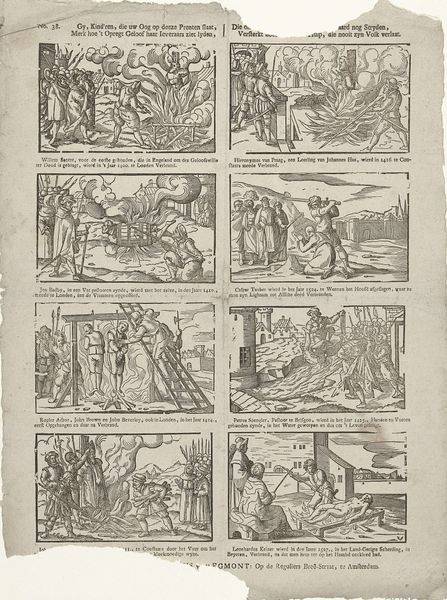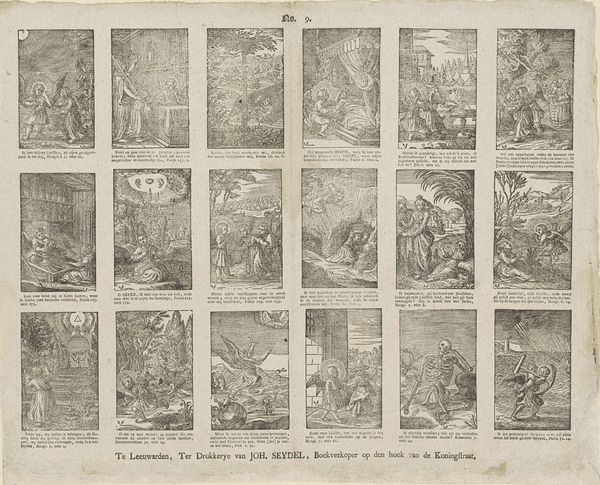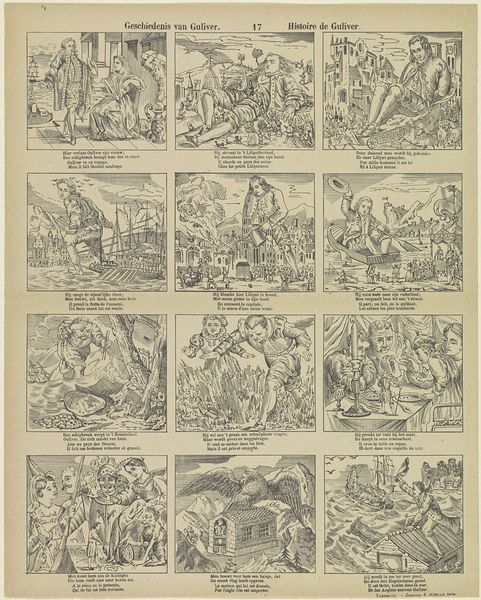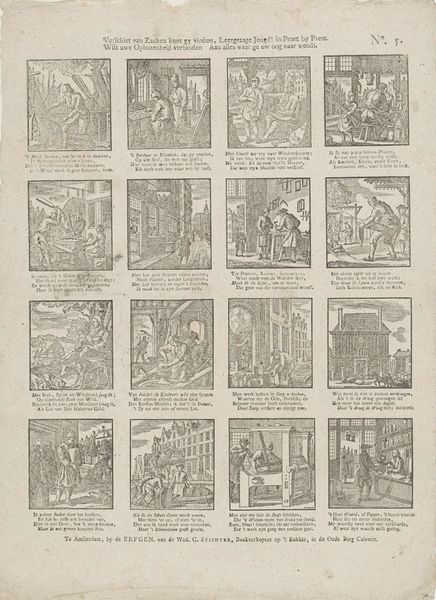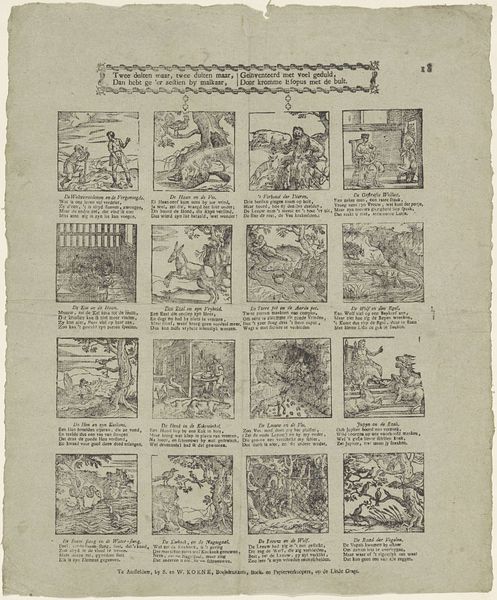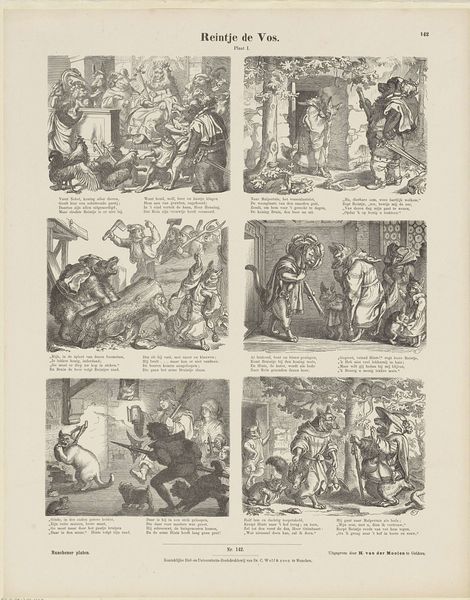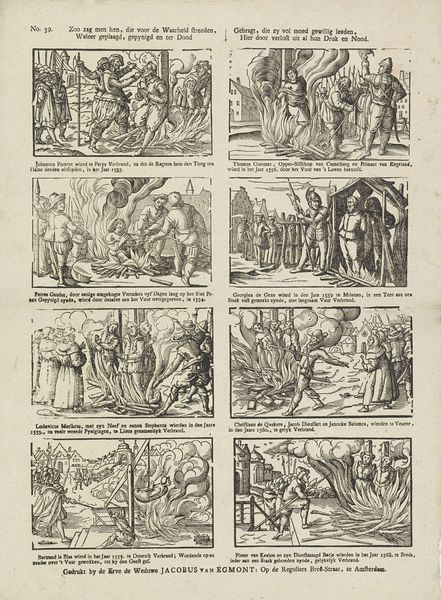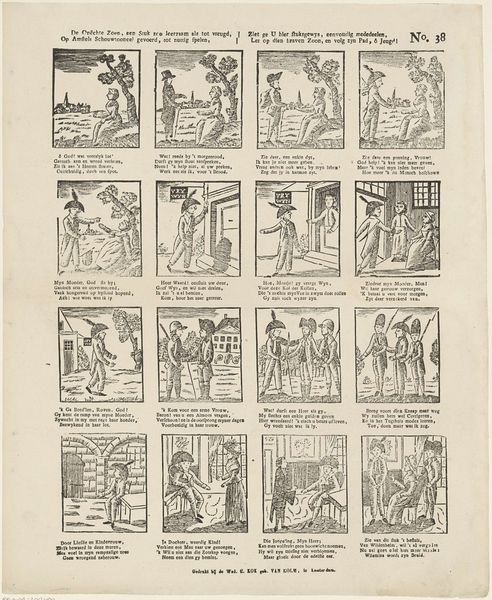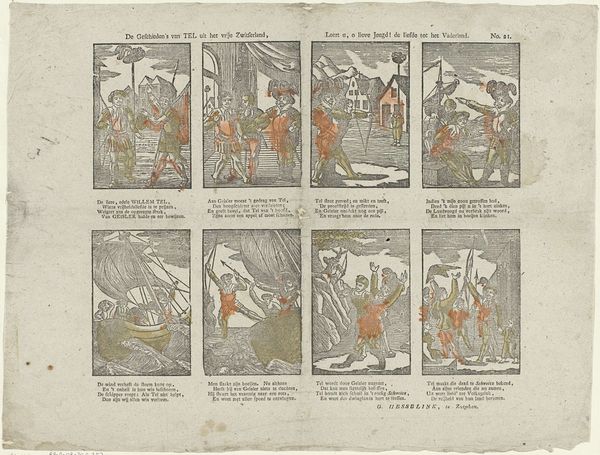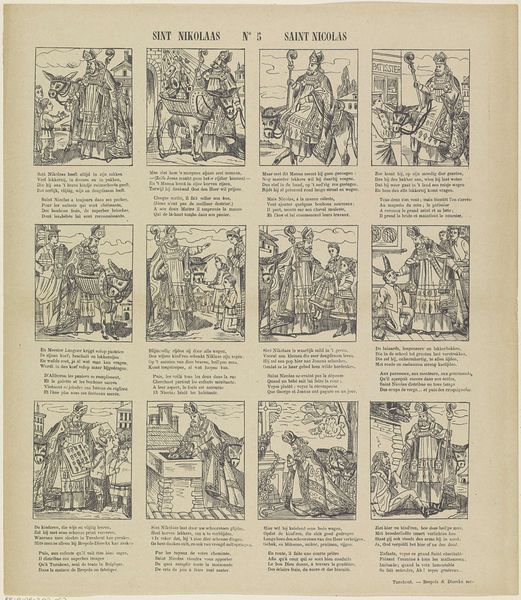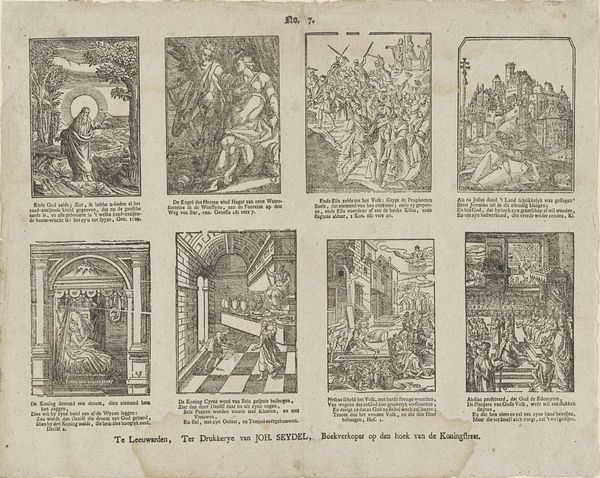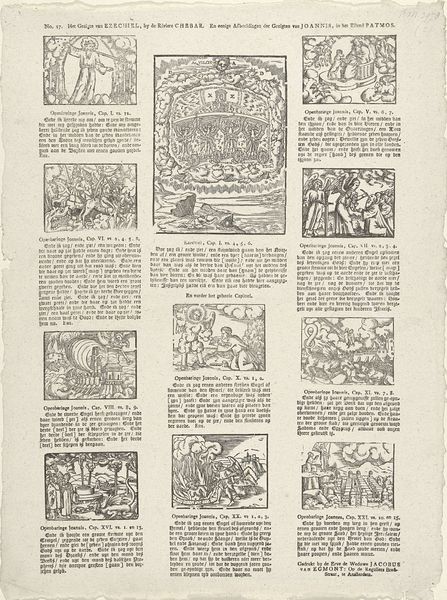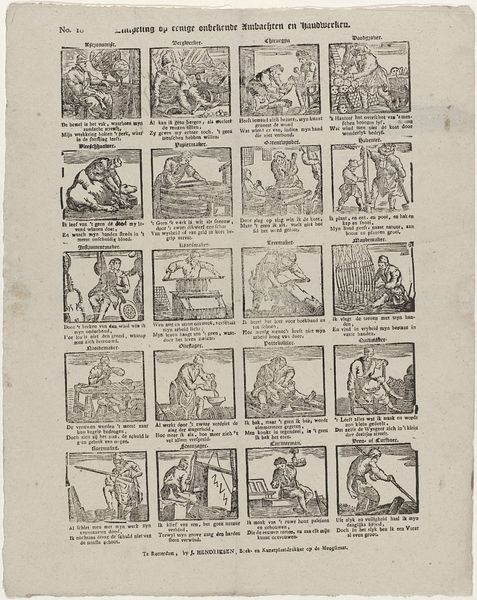![De geschiedenis van den Zwitser Willem Tell [(...)] by Christiaan Jacob Schuyling](/_next/image?url=https%3A%2F%2Fd2w8kbdekdi1gv.cloudfront.net%2FeyJidWNrZXQiOiAiYXJ0ZXJhLWltYWdlcy1idWNrZXQiLCAia2V5IjogImFydHdvcmtzLzU0NWNkZGFjLWJhNmYtNDE4YS05NDliLWU5OWUwZWMxZGZmNS81NDVjZGRhYy1iYTZmLTQxOGEtOTQ5Yi1lOTllMGVjMWRmZjVfZnVsbC5qcGciLCAiZWRpdHMiOiB7InJlc2l6ZSI6IHsid2lkdGgiOiAxOTIwLCAiaGVpZ2h0IjogMTkyMCwgImZpdCI6ICJpbnNpZGUifX19&w=3840&q=75)
print, engraving
#
narrative-art
# print
#
folk-art
#
history-painting
#
engraving
Dimensions: height 338 mm, width 418 mm
Copyright: Rijks Museum: Open Domain
Editor: We're looking at "The History of the Swiss William Tell" by Christiaan Jacob Schuyling, made between 1820 and 1838. It’s a print, seemingly an engraving, showing different scenes. It reminds me of a comic strip, almost telling a story panel by panel. How do you interpret this work in its historical context? Curator: Well, the “comic strip” comparison is quite apt. Schuyling’s engraving speaks to the popularization of history and folklore during the 19th century. Consider how the narrative itself, William Tell’s defiance against oppression, resonated with emerging nationalist sentiments in Europe. The choice of a widely accessible print medium is significant too. It moves history out of the realm of elite paintings and into a form consumed by a broader public. Editor: So, the medium itself becomes a statement? Curator: Exactly! Prints like this served to disseminate and solidify national myths, visually encoding stories that bolstered a sense of collective identity. Think about where this would have been displayed - perhaps a middle-class home or a public space? Its accessibility helped shape and reinforce a certain narrative of Swiss history and national character. Editor: The figures seem somewhat… stiff, not very naturalistic. Does that style have a purpose? Curator: Indeed. These aren't high-art renderings aimed at capturing lifelike realism. This stylistic choice aligns with folk art traditions, emphasizing clarity of storytelling over aesthetic finesse. Remember, its purpose isn't to emulate academic painting; it's to communicate a powerful narrative in a way that's legible and engaging to a broad audience. This deliberate aesthetic choice further grounds the heroic narrative in the sphere of common identity and social belonging. It helps to define what and whom this piece is *for*. Editor: I never considered how even the style could play a part in shaping national identity. I see this print very differently now! Curator: Precisely. By considering its context and function, we gain a deeper understanding of the work's impact on how the Swiss people imagined themselves.
Comments
No comments
Be the first to comment and join the conversation on the ultimate creative platform.
